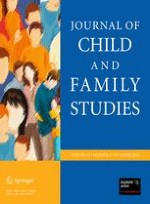01-10-2010 | Original Paper
Relating Callous-Unemotional Traits to Physically Restrictive Treatment Measures Among Child Psychiatric Inpatients
Gepubliceerd in: Journal of Child and Family Studies | Uitgave 5/2010
Log in om toegang te krijgenAbstract
We examined the association of callous-unemotional (C/U) traits with the rates of seclusion and restraint among a sample of child psychiatric inpatients (N = 101). Analyses focused on the incremental value of C/U traits as a predictor over and above the influence of other risk factors for physically restrictive treatment measures found in previous research, including gender, age, verbal intelligence, ethnicity, the diagnosis of a conduct disorder or an oppositional defiant disorder, maltreatment history, and the other dimensions of psychopathy (i.e., narcissism and impulsivity). Results of hierarchical multiple regressions indicated that younger age and C/U traits predicted seclusion rates, whereas only C/U traits predicted restraint rates. The discussion of these findings focuses on the necessity of developing effective intervention programs for inpatient children with prominent C/U traits, to help forestall the physically dangerous behavior that necessitates a seclusion or restraint.
